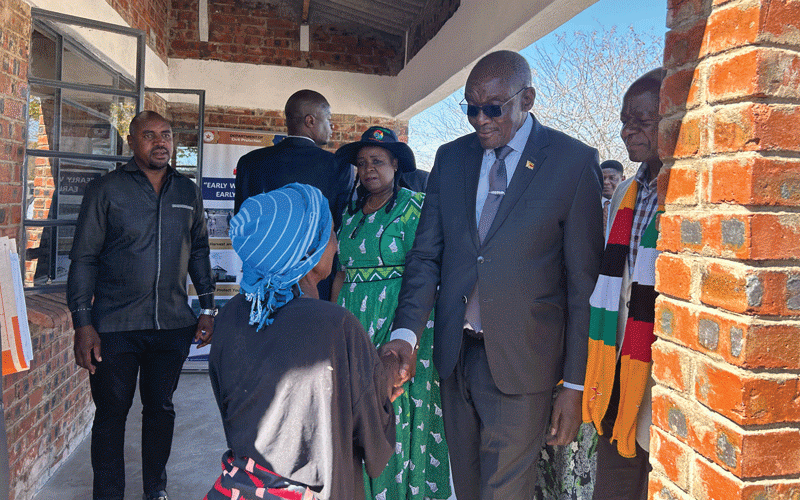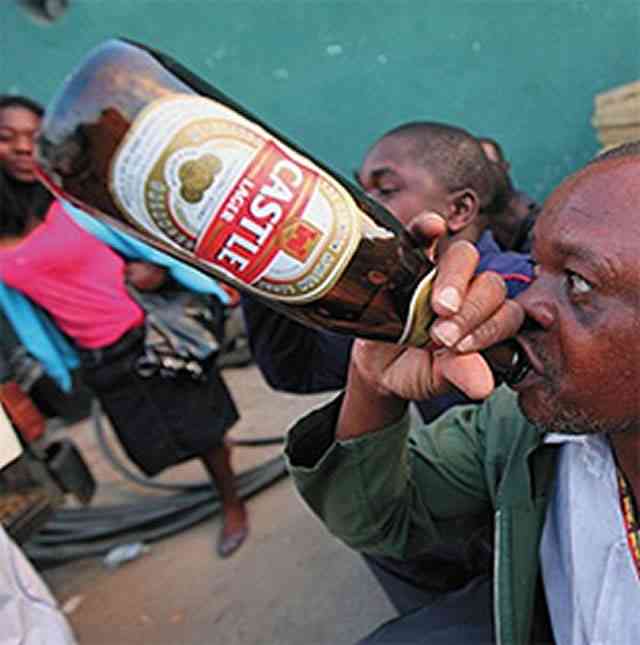
A whirlwind swept through a high-profile government event in Binga district last Thursday, disrupting the official commissioning of the Nsungwale Disaster Recovery Housing Project by Vice President Kembo Mohadi.
The dramatic weather event occurred moments after the VP arrival at Nsungwale village where the ceremony was being held.
What began as a light wind quickly intensified, uprooting tents, tearing down poles, and sending debris flying, including the structure that had been set up as the official stage.
Though no injuries were reported, the whirlwind left many shaken and temporarily brought proceedings to a halt.
Some community members viewed the whirlwind as a bad omen, suggesting that the ancestral spirits may have been displeased by the event or failure to respect local traditions.
Chief Sinakoma emphasised the importance of respecting cultural traditions and consulting traditional leaders during all phases of community projects.
“What happened today with the whirlwind is not normal. It is a sign,” Chief Sinakoma said.
“Our traditional customs and ancestral spirits must always be respected.”
- Zanu PF bigwigs thrown under the bus
- Feature: Killings raise gender violence concerns in Zim
- Bulawayo a great, clean city: Mohadi
- Probe Zec commissioners, govt told
Keep Reading
Despite the chaos, the programme continued, with Mohadi proceeding to tour the 37 newly constructed houses before addressing the crowd.
The Nsungwale Disaster Recovery Housing Project was born out of the 2020 flash floods that occurred at the confluence of the Simbwambwa, Siakanda, Namapande and Manyenyengwa rivers.
Initiated in 2021, the project aimed to provide not only housing, but also essential infrastructure and services.
Mohadi explained that the project was launched in response to devastating flash floods that struck the area in February 2020, displacing hundreds of families.
“This initiative is part of the government’s Rural Development 5.0 strategy as articulated by His Excellency...,” Mohadi said.
“A total of 215 households were affected, and 37 homes were completely destroyed.
“The Nsungwale Disaster Recovery Housing Project was implemented to restore dignity and stability to the affected community.”
The houses, constructed under the “Build Back Better” principle of the Sendai Framework for Disaster Risk Reduction, are designed to be more resilient to future disasters.
In addition to the 37 houses, ablution facilities and a reconstructed primary school have also been completed.
“Zimbabwe has not been spared by climate change,” Mohadi added.
“The increasing frequency and severity of disasters, including droughts, cyclones, and floods, call for strengthened early warning systems and community resilience.”
Local Government and Public Works minister DanielGarwe praised the project as a milestone in addressing housing needs and fostering economic resilience.
“The project includes potable water, roads, and a completed primary school.
“Going forward, the government will ensure additional social services such as clinics, mobile network access, electricity and a local business centre,” he said.
He urged community members to take advantage of available resources, such as abundant water, to engage in small-scale agriculture and livelihoods projects.
Chief Sinakoma said the lives of several affected families were disrupted by the floods.
“These houses bring dignity back to my people and we are grateful to the Government for coming up with this project following the floods that left 181 families homeless,” he said.
“My heart is full of joy as I witness this event.”
Benita Mwembe (42), one of the recipients of the new houses, expressed both joy and concern.
“I’m grateful for the house, but not everyone in the community is happy,” she said.
“Some are jealous and speaking ill of us.
“Still, I now have keys to my own house, and that means a lot.”
Smart Muzamba, who is a father of five said life was never the same after his huts were swept away by the floods.
“After the floods, we were left scattered, like birds without nests,” Muzamba said.
“My children often woke up crying in the middle of the night, haunted by the fear of being swept away again.
“But today, I feel whole again—I have a home for my family, and my children can finally sleep in peace.”
Another beneficiary, JerinahMuleya, could not hide her joy after she was handed keys to her new home.
“Finding myself in such a beautiful home feels like a dream, especially after the devastating floods that left my family and me homeless,” she said.
“Remembering that day still brings tears to my eyes, but today, they are tears of joy.
“I am deeply grateful to the government for keeping its promise—this is truly a day of celebration for us.”
Government officials described the housing development as a key part of disaster resilience and rural development under Zimbabwe’s Vision 2030.









